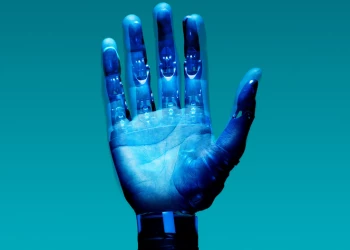Why a CX and UX Alignment is Imperative For CX
Add bookmarkJane Austin, Head of UX at The Telegraph, highlights what customer experience leaders can learn from their user experience colleagues.
For customer experience (CX) leaders it’s not unusual to have an almost singular focus on existing customers; from creating enticing loyalty programmes and minimising churn, to complaints handling and finding innovative ways to market products and services.
However, how user-centric are your designs and processes really? And what steps can you take to grow your customer base? That’s where a closer collaboration with your user experience (UX) colleagues can provide invaluable benefits. CX network spoke to Jane Austin, Head of UX at The Telegraph, about the field of UX and why it is important to make it a prominent feature within your customer experience strategy.
SEE ALSO: Interview with Kristof Fahy, Chief Marketing Officer at Telegraph Media Group
What is UX?
UX is a design skill and focuses on problem-solving products you provide to your customers. It has to be something that they really want and that is straight-forward to use. For example, at The Telegraph this means a current focus on the redesign of the website to make it more user-centric, and they’re also in the process of building additional services for their readers.
UX teams continuously conduct research, in a collaborative way with the visual designers and developers, to create a greater understanding of what customers are looking for and what the problems are that they are facing.
In the case of Austin’s team this takes shape in the form of a huge amount of research, including Testing Tuesday – which can be looking at anything from a sketch or simple prototype to a nearly finished product – to surveys, one-to-one interviews and diary studies. The majority of this is formative research and the next step is summative research, where the team looks at whether they have solved the problems they set out to tackle.
"Something UX can really help with is the understanding of one problem and relentlessly focusing on that with features that really help the customer," Austin explained.
A great example of a game-changer within the field of UX is Uber. The brains behind the transport company have figured out what the problem is they’re solving for their customers – convenience – and so they have an almost singular focus on tackling this issue. Before they move to a new territory they make sure they know how long it takes for a cab to come on average and if it takes too long at any particular time they know there is a market there. All their features are geared towards solving the issue of convenience by giving customers continuous alerts and showing them when a cab is coming.
UX Challenges
One of the main challenges UX teams are currently facing, especially in content organisations such as The Telegraph, is the proliferation of devices. A quick glance at a newspaper instantly establishes the importance of a story by its positioning on the page, and the size of the headline and images; there is visual information to convey what kind of story it is and how important it is.
However, when you move to a different device, such as wearables or audio interfaces, how do you show that a story is important? And how do you create something that works across a huge range of devices and interfaces? Austin highlighted that they’re currently working on the Apple Watch design and their research delves into what people are doing on the device so they are able to progress enhancement and create a responsive design.
She also said that while it is difficult to predict what the next big thing will be, from a UX point of view it’s important to ensure that you’re aware of the challenges as soon as they come up and consider how you can adapt. You never stop learning and you have to be ready to constantly change because the landscape is altering so rapidly.
UX vs CX
In Austin’s experience, CX professionals are more business-centred, focusing on marketing, call centres and the sale of products and services, while UX is about designing (digital) products that people want to and can use. So, UX is good at designing new products and services and CX makes sure that they are marketed and presented in the right way.
And as CX tends to focus on existing customers and improving their journey, UX can help by understanding unmet needs, which in turn can lead to business growth and converting people into loyal customers. Vice versa, CX can show UX the significance of the various touch-points as the latter tends to focus on digital customer contact points only.
"From a CX point of view you shouldn’t just talk to people who are currently your customers, you should be looking wider and understanding who could be your customers and who were your customers," Austin explained. "And UX can help with that in terms of research."
Aligning the Teams
There seems to be a gulf between the fields of CX and UX as the origins are different, yet the two teams are ultimately working towards the same goal, that of creating a seamless customer journey and delivering a great experience. So how do you close that gap to create a more collaborative environment?
Austin said that this will require a cultural change as the UX and CX teams are often in different parts of the business and report to different people. So more often than not the responsibility lies with the C-suite to ensure that the two teams are aligned and integrated.
That doesn’t mean that they cannot collaborate, even if they are two different parts of the business. At The Telegraph the UX team works closely with the those working in the call centre, which has been mutually beneficial.
Austin said: "We’ve created personas based on user research and presented them to the call centre. And the call centre sends us details of problems people have experienced, which then gets folded back into our own research roadmap. This has been very helpful."
There are clear benefits to aligning your CX and UX teams to create a collaborative environment in which you can improve the delivery of your customer experience; UX has the tools and research available to formulate a solid framework for the customer relationship and CX professionals can ensure that the products and services are then marketed in the best possible way to create brand advocacy and lifelong loyalty.




















